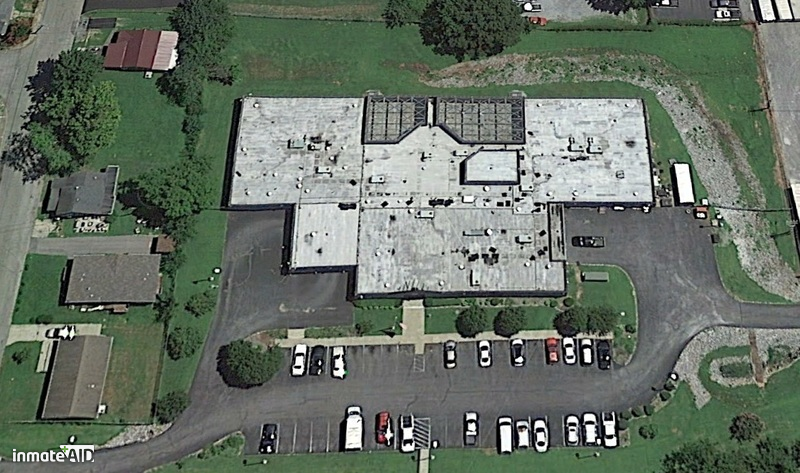Thank you for trying AMP!
You got lucky! We have no ad to show to you!
Connect with an Inmate
Calloway County Jail & Workhouse
County Jail and Work Release
Calloway Co Jail is for County Jail and Work Release offenders have not been sentenced yet and are detained here until their case is heard.
All prisons and jails have Security or Custody levels depending on the inmate’s classification, sentence, and criminal history. Please review the rules and regulations for County - medium facility.
The phone carrier is Combined Public Communications (CPC), to see their rates and best-calling plans for your inmate to call you.
If you are seeking to send your inmate money for commissary, one recommended for this facility is InmateDeposits.com. There is a fee for sending money, see their rates and limitations.
If you are unsure of your inmate's location, you can search and locate your inmate by typing in their last name, first name or first initial, and/or the offender ID number to get their accurate information immediately Registered Offenders
You can support your loved ones at Calloway Co Jail on InmateAid, if you have any immediate questions contact the facility directly at 270-753-6150.
When someone you care about ends up in jail, figuring out how things work can be overwhelming. From sending mail to visiting, it's a lot to handle. And getting info about the arrest? Not always easy. That's where this webpage comes in. It's here to help you understand what's going on at Calloway County Jail & Workhouse so you can stay connected and support your loved one behind bars.
The Calloway Co Jail uniquely offers a work release program that enables inmates the option to work outside during the day, fostering responsibility and skills. This initiative aims to reduce recidivism and promote rehabilitation, enhancing community safety. Located at 310 N 4th St, Murray, KY there is hope for all resident-inmates located here. The main facility is low security while the work release residents are minimum security.
The Calloway County Jail, built in 1996, is a correctional facility with a capacity of 129 beds, accommodating both state and county inmates. Additionally, it includes a 34-bed Workhouse. Ken Claud, elected in 2014, serves as the Jailer, overseeing operations. The facility employs 34 full-time and 4 part-time staff members and contracts with West Kentucky Correctional Health for medical services.
Individuals who do not post bail within the first twenty-four hours are required to appear before a judge. During this first appearance, conducted either in person or via telephone, the judge informs the arrested person of the charges against them and sets the bond amount.
Following the intake process, which includes property inventory, medical screening, and booking, inmates are assigned to the general population. Housing assignments are based on the classification of their charges, whether felony or misdemeanor, to ensure proper management and safety within the facility.
After processing, inmates are assigned to a housing area based on classification. Compliance with jail rules typically results in a lower classification and more privileges, while rule violations or additional charges lead to a higher classification and fewer privileges. Inmates serving as trustees within the jail undertake various tasks, including cooking, laundry, and commissary management, often receiving minimal compensation or sentence reduction for their services.
The jail is designed with "pods," featuring a large common area with affixed tables and attached seats, and individual cells typically on two levels. Inmates spend certain times in their cells and other times congregating in the pod for activities like playing cards, games, reading, or watching television. Movement outside the pod, such as trips to the commissary, library, or recreation area, occurs under the constant supervision of unarmed correctional officers. The environment in the county jail is considered less stressful than that of a prison because the sentences are much shorter.
The jail offers a phone program for outbound calls only, with inmates unable to receive incoming calls. Accepting collect calls can be expensive, sometimes exceeding $10 per call. Alternatively, setting up an account through a third-party phone company may entail high fees per minute of usage. Click here for discounts on inmate calls, especially if the communication with your inmate is frequent. It's important to remember that all phone calls are recorded, and discussing sensitive legal matters over these lines is discouraged.
Books and magazines ordered for inmates must come directly from the publisher. This policy ensures that the items are new, untampered, and comply with the facility's regulations. The Jail enforces this rule to prevent the introduction of contraband or prohibited materials. By restricting orders to publishers, the facility can better maintain security and control over the content entering the institution. Any books or magazines not received directly from the publisher will be rejected and not delivered to the inmate. You may, however, send letters and selfies to inmates with this easy-to-use app, packages starting at only $8.00.
Inmate workers are chosen based on conduct and cooperation with staff. Participation in the community service program can sometimes reduce sentences. Commissary is available weekly, with orders submitted via kiosk two days in advance. On holidays, there may be increased spending limits. Upon receiving commissary items, inmates must present their ID, check their order, and sign for it in the presence of the commissary employee. Indigent inmates are provided with all essential basic hygiene items including USPS stamps and writing materials.
Inmates at the Calloway County Jail have access to various programs aimed at assisting them upon release. These programs include GED classes, Narcotics Anonymous (NA) meetings, substance abuse counseling, Moral Reconation Therapy (MRT), and PORTALS New Direction. Additionally, inmates can utilize an in-house law library and have library cart privileges. Commissary services are available once a week, allowing inmates to purchase hygiene and paper items, as well as snack foods and drinks.









